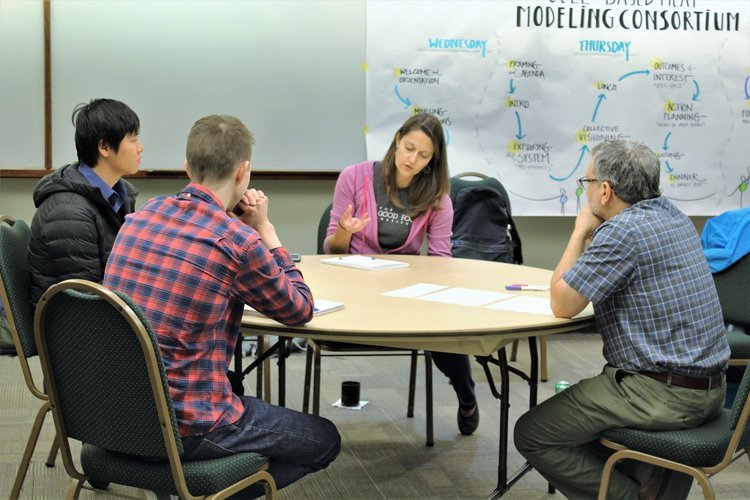Cultivating Alternatives for Food: Is Cultivated Meat Coming Soon to Your Dinner Plate?
The Cultivated Meat Modeling Consortium (CMMC) was founded 2019 to accelerate the progress in the cultivated meat industry.
Today, one in nine people in the world go hungry. One of the UN Sustainable Development Goal is to end hunger by 2030. Growing more food at the needed pace will require super-advanced engineering and scaling-up entire supply chains. How can people grow more food, reduce dependence on animals and protect the environment?
As people get more concerned about sustainability, climate crisis, animal welfare and their own health, cultivated meat has emerged as an innovative option. As per the Good Food Institute (GFI), cultivated meat uses significantly less land and water, emits fewer greenhouse gases, and reduces agriculture-related pollution. Plus, it reduces the risk of zoonotic diseases. Cultivated salmon sashimi , beef tartare or foie gras - anyone?
The basic ideas underlying cultivated meat were conceived in the 1950s by the Dutch scientist Willem van Eelen. But it was not until 2013 when physiologist Mark Post presented the first "cultivated meat burger" at a press conference in London that the idea gained traction – and progress has been accelerating ever since.
In fact, Singapore became the first country to approve the sale of cultivated meat products to consumers in late 2020.
As reported by CNN just two years later, the US Food and Drug Administration (USFDA) cleared lab-grown meat products as safe to eat.
And the cultivated-meat sector is now piquing interest and investment from venture capitalists from around the world. According to Pitchbook, investors have poured more than $3 billion into cultivated meat startups over the past two years.
Scientists can now grow meat in the lab directly from cells of an animal. They first isolate high-quality cells from tiny biopsies of living or recently slaughtered animals. They then feed the cells with liquid nutrients so they can grow and multiply. Finally, the cells are encouraged to fuse into muscle fibers to form ground meat, pumped through 3D printing nozzles to create thin sheets of meat, or embedded in edible scaffolds to form steaks. The process takes weeks, far less than the many months required to grow a whole animal. Yet, the product is comparable or superior in taste and nutrition to butchered meat, while also being safer and kinder to the planet.
Hundreds of companies and academic institutions are contributing to commercialization of this technology. To support the nascent industry, Simon Kahan with his colleagues at Biocellion SPC, Seattle, and Merck, KGaA, Darmstadt founded the Cultivated Meat Modeling Consortium (CMMC) in 2019. The CMMC’s purpose is to accelerate progress in cultivated meat by developing and applying computational tools. The CMMC has built partnerships across continents, with Brown University, Merck KGaA, Aleph Farms, GFI, Netherlands eScience Center, Van Heron Labs, and several others. The CMMC is powered by membership fees from commercial members and the volunteer labor of dozens of graduate students from diverse engineering and science disciplines.
"Cultivated meat promises to feed ten-billion people by 2050, preserve ocean ecosystems, and reduce animal agriculture’s impact on the climate. Broader collaboration and technological innovation are needed to establish and grow the cultivated meat industry. The CMMC brings together engineers and scientists around the globe to develop and apply computational modeling techniques that accelerate innovation in the field,” elaborates Kahan.
Currently, scientists rely on costly and time-consuming laboratory experiments to innovate and optimize the weeks-long processes used to cultivate meat. The CMMC is promoting the use of virtual experiments: computer simulations of living system behaviors modelled cell by cell. Virtual experiments are faster, cheaper, and less wasteful than laboratory experiments, thus promising to get affordable, high-quality meat products to consumers sooner.
If the dream is to rapidly tackle the challenges of hunger and food insecurity for a population rising to 10 billion in the mid-century, we need platforms like the CMMC that amplify the power of people, science, and ideas. With a clear intent to make a long-term investment in doing good, Kahan and his team at the CMMC are charting a new path.
ABOUT US: IMPACTIKA CONSULTING
We at Impactika Consulting help do-gooders do better through purpose-propelled™ consulting. We are a digital marketing, strategy, and social impact consulting firm. We help for-purpose organizations take on the world’s toughest challenges in digital rights, social and economic justice, education, and more.
As an advocate for both business and doing good, Impactika is a women-led team committed to helping organizations around the world find impactful and meaningful ways to market their purposes and connect with others.


